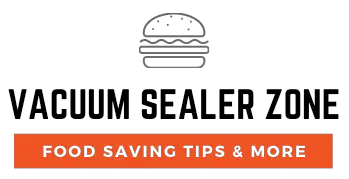Bread is the most consumed staple food worldwide. It is versatile and can be made in a variety of forms and used in countless recipes.
Many people love the sweet aroma of freshly baked bread and the sweet crunchy taste it comes with. Whether you just bought it fresh from a bakery or you baked it yourself, there is a high chance that you wish it could remain just as fresh for longer.
There are several methods of preservation that you can use for your bread and with vacuum sealing preservation being a current craze, you may wonder if it works for bread too.
The method involves drawing out all air from a package before sealing it. Is it suitable for bread? Let’s find out.
Can you vacuum seal bread?
You can vacuum seal bread and have it last much longer than with other forms of preservation. Vacuum sealed bread can stay for a week if stored in the pantry and up to 3 years if frozen. It will remain fresh, tasty, and look as good as it just came out of the oven even when stored for long periods.
You should freeze bread first or use a pulse setting while vacuum sealing so that it doesn’t lose its form.
Benefits of vacuum sealing bread
Vacuum sealing bread is a great way of preserving it. It’s benefits include:
Keeps it fresh for longer
If you just bought some freshly baked bread, a couple more bagels that were on sale, or you baked the bread yourself, you may not take it all at once unless you have people coming over.
This is where vacuum sealing comes in. Vacuum sealing ensures that the current freshness, taste, and texture of the bread is intact even after months of storage.
Not only that, it will keep bread fresh for much longer than other preservation methods, up to 3 years long, although you wouldn’t want to keep bread that long anyway.
Reduces food waste
Vacuum sealing will enable the preservation of bread which will prevent the bread from going stale. This will help you avoid having to throw out the bad bread.
Saves money
Having a vacuum sealing machine will give you the confidence to buy bread in bulk because you will know that you can preserve the extra you are not having for the time being. Bulk buying of food is always cheaper, saving you money.
How to vacuum seal bread

When it comes to vacuum sealing bread, there are two ways to go about it if you want to do it properly. This is because normal vacuum sealing can disappoint you with its outcome.
If you were to simply pop your bread in a vacuum bag and seal it, the machine would draw out all air including the one in your airy bread leaving it flattened and with no shape. To avoid this, you can use the following methods:
1. Freezing
Freezing firms up the bread ensuring it doesn’t break down when vacuumed. Place the bread in a tray and freeze it for a couple of hours then take it out.
You can then go ahead and vacuum seal it. Frozen bread remains in its original state even after vacuuming so you won’t have to worry about ending up with a formless crushed bread.
2. Pulse setting
If you don’t want to freeze your bread, you can use the pulse setting method. If your vacuum sealer machine has the pulse setting option, you can control the vacuuming process yourself.
Watch as the air is drawn out gradually and stop the machine just before it crushes your dear bread. Machines may have different settings so be sure you know how yours works.
Alternatives to vacuum sealing
If you are not keen on vacuum sealing your bread, there are alternative methods that you can use to preserve it like:
Bread Boxes
A bread box is a good way of storing bread. It has enough air circulation and prevents mold from forming.
It absorbs moisture from bread inside the container keeping the bread fresh and in its original condition for about 3-6 days.
Plastics Bags
Plastic bags can store bread for longer, up to 7 days. Most store-bought bread will even come in plastic bags.
They trap air and moisture inside them which makes bread not go stale for a few days. You can use plastic bags or a Ziploc bag and ensure that the bread is stored at room temperature.
However, plastic bags tend to draw moisture from the bread’s inner moist parts towards its crunchy crust. This softens it removing the appealing crunch that makes bread so tasty. Your bread will stay fresh for longer but lose its crust.
Paper Bags
Bakeries like using paper bags for their fresh bakes because the bread is mainly for eating either right away or within a couple of days. Paper bags allow the circulation of air inside them which keeps the bread dry and fresh.
If you are using paper bags for cut bread, put it in the bag with the cut-part facing down. This ensures that the crumb side remains moist and the crust crisp.
Refrigerators
Refrigerators are used to preserve almost everything and bread is no exception. However, bread tends to go stale faster in a refrigerator compared to when at room temperatures.
The low temperatures usually over-dry it and your bread loses its moisture, taste, and original texture. A good way would be to keep the bread for a couple of days at room temperatures then freeze it for a few more days if you want it to last longer.
You can thaw then heat it before eating for that newly-baked taste.
Recap
Bread can be vacuum-sealed to make it last longer while still keeping its fresh wholesome and crunchy taste.
Other than vacuum sealing, one can preserve bread using bread boxes, plastic bags, paper bags, or refrigerators, but vacuum sealing stands out as far much better.
It preserves the bread for longer, reduces food waste, and saves you money. To prevent the bread from getting crumbled by vacuum sealing, freeze it beforehand or use a pulse setting with your machine to control the vacuuming process.



![Can You Vacuum Seal Tomatoes? [The Proper Way!]](https://vacuumsealerzone.com/wp-content/uploads/2021/08/Can-You-Vacuum-Seal-Tomatoes-350x200.jpg)